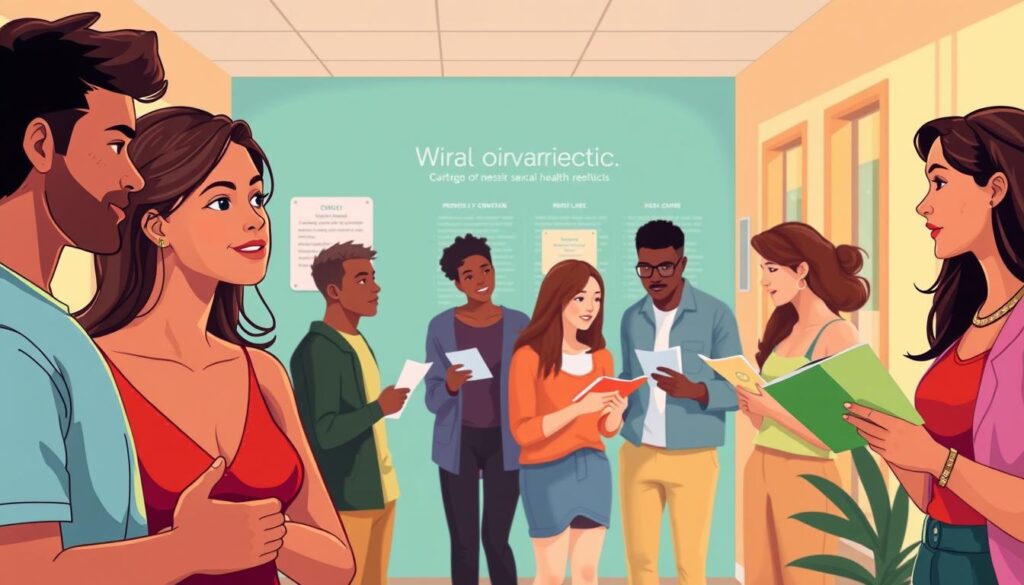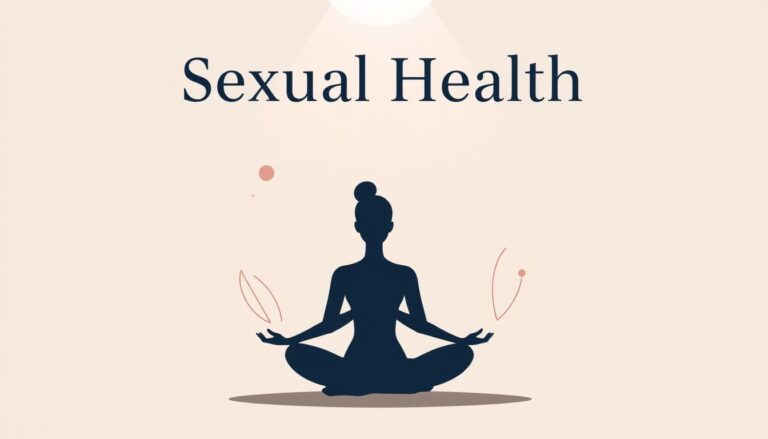Sexually Transmitted Diseases Prevention : How to Stay Safe
Table of Contents
Every intimate moment carries risks that many overlook. Learning about sexually transmitted diseases prevention is key to protecting your health. In the United States, over 20 million new STI infections happen every year. This makes knowing about stds more important than ever.
Safe sex practices are not just suggestions; they are essential. Most STIs don’t show symptoms, so you or your partner might not know you’re infected. This shows how important it is to take care of your health and talk openly with your partner.
Your sexual health is a big part of taking care of yourself. By learning and taking steps to prevent STIs, you can lower your risk of getting or spreading them. Knowing the facts can really help protect you.
Key Takeaways
- Most STIs are asymptomatic and can be unknowingly transmitted
- Regular testing is crucial for sexual health
- Barrier methods like condoms provide essential protection
- Limiting sexual partners can reduce STI transmission risks
- Vaccines are available for several STIs, including HPV
Understanding STIs and STDs: The Basics
Learning about sexually transmitted infections (STIs) and diseases (STDs) is key. These terms are often mixed up, but they mean different things for your health.
STD awareness starts with knowing STIs are infections that might turn into diseases. There are 20 different types of STIs, each with its own health risks.
Common Types of Sexually Transmitted Infections
- Bacterial infections:
- Chlamydia
- Gonorrhea
- Syphilis
- Viral infections:
- HIV
- Herpes
- Human Papillomavirus (HPV)
- Parasitic infections:
- Trichomoniasis
How STIs Differ from STDs
STIs and STDs differ in symptoms and severity. An STI turns into an STD when symptoms appear or it gets worse. About 1 in 2 sexually active individuals will get an STI by age 25.
Impact on Sexual Health
Untreated STIs can cause serious health problems. These include fertility issues, higher cancer risk, and passing the infection to others. Getting tested early is key to protecting your health.
Knowledge is your best protection against sexually transmitted infections.
With 20 million new STIs happening each year in the U.S., knowing how to prevent them is crucial.
How STIs Spread: Transmission Routes and Risk Factors
It’s important to know how sexually transmitted infections (STIs) spread to prevent them. Every day, over 1 million new STIs are caught. This makes it key to be sexually responsible.
STIs can spread through different ways of sexual contact. These include:
- Vaginal intercourse
- Anal sex
- Oral sexual activities
- Skin-to-skin genital contact
Some behaviors make you more likely to get an STI. Young people, especially those 15 to 24, are at high risk. They make up a big part of new infections worldwide.
Key risk factors for STI transmission include:
- Unprotected sexual encounters
- Multiple sexual partners
- Substance use during sexual activity
- Anonymous sexual encounters
- Lack of regular STI testing
Interestingly, non-sexual transmission routes also exist. Some infections can pass from mother to child during pregnancy or childbirth. This shows why knowing about sexual health is so important.
Being sexually responsible means knowing how STIs spread. It also means getting tested regularly and protecting yourself and others. By being informed and making smart choices, you can lower your risk of getting or spreading STIs.
The Importance of Safe Sex Practices
Sexual health is all about being proactive and making smart choices. About 1 in 2 people get an STI by age 25. So, it’s key to know about safe sex to keep yourself and your partner healthy.
When you’re being intimate, it’s important to take steps to protect yourself. Safe sex isn’t just a suggestion—it’s a must for staying healthy in your sexual life.
Barrier Methods and Their Effectiveness
Barrier methods are a big help in preventing STIs. Condoms are the top choice for protection:
- Latex condoms are 98% effective when used right
- Polyurethane condoms are good for those allergic to latex
- Dental dams protect during oral sex
Proper Condom Usage Guidelines
Being sexually responsible means knowing how to use condoms right. Here are some important tips:
- Use a new condom for each time you have sex
- Check the expiration date before using
- Keep condoms in a cool, dry place
- Make sure they fit right and are the right material
- Put them on carefully before touching genitals
Alternative Protection Methods
There are more ways to protect yourself than just condoms. Female condoms and other special methods can help too. Talking to your doctor can help you find the best protection for you.
Good sexual health is more than just using protection. It’s about talking openly, respecting each other, and getting medical care too.
Sexually Transmitted Diseases Prevention: Essential Strategies

Keeping your sexual health safe is a big job. It’s not about one thing; it’s about many. By using different ways to prevent STDs, you can lower your risk a lot.
Here are some important steps for staying safe and informed:
- Abstinence: The best way to avoid STIs is to not have sex at all
- Having fewer sexual partners
- Being in a monogamous relationship
- Getting vaccinated against certain diseases
- Testing for STDs regularly with your partner
Vaccines are a big help in preventing STDs. The CDC says everyone aged 11-26 should get the HPV vaccine. They also recommend the hepatitis B vaccine for people with many sexual partners. These shots can protect you from serious diseases before you even get them.
Talking openly with your sexual partners is key. Share your STD test results, talk about risks, and discuss how you’ll protect each other. Being open and honest makes sex safer and promotes good health habits.
According to CDC guidelines, consistent condom use can reduce HIV transmission by 71-80% in heterosexual relationships.
Effective STD prevention is all about using many strategies. Learn, protect yourself, get tested, and make smart choices. This way, you can keep your sexual health in top shape.
To get better results, you can benefit from the benefits of this nutritional supplement
Vaccination and Preventive Medicine
Modern medicine has given us powerful tools to prevent HIV/AIDS and protect our sexual health. New strategies in preventive medicine help lower the risk of sexually transmitted infections and diseases.
Available Vaccines for STD Prevention
- HPV vaccine: Prevents human papillomavirus infection
- Hepatitis A vaccine: Protects against hepatitis transmission
- Hepatitis B vaccine: Recommended for adults with multiple partners
- Mpox vaccine: Reduces risk of mpox virus transmission
PrEP and PEP for HIV Prevention
New medicines are key in preventing HIV/AIDS. Two main options are:
- Pre-Exposure Prophylaxis (PrEP): A daily pill or injection that greatly lowers HIV risk
- Post-Exposure Prophylaxis (PEP): A medication taken within 72 hours after possible HIV exposure
Preventive Antibiotics and Their Role
Recent studies show antibiotics can help prevent STDs. DoxyPEP, a 200 mg doxycycline dose, taken within 72 hours after sex, has shown great results in lowering bacterial STI transmission.
Clinical trials show DoxyPEP can cut bacterial STI cases by up to two-thirds in high-risk groups.
Always talk to your doctor to find the best prevention plan for you. This will depend on your risk factors and health.
Partner Communication and Sexual Health

Talking about sexual health can be tough, but it’s key to being sexually responsible. Open talks with your partner keep you both safe from risks. The CDC says about 1 in 5 people in the U.S. has an STI, making these talks vital.
Good sexual health education begins with a safe space for talking. Before getting intimate, talk about these important points:
- Recent STI testing results
- Sexual history
- Preferred protection methods
- Comfort levels with different sexual activities
“Communication is the foundation of sexual responsibility and mutual respect.” – Sexual Health Expert
Breaking through communication barriers takes courage and empathy. Remember, your partner probably feels just as nervous. Talk with respect, understanding, and a focus on both of your health and safety.
Only 12% of sexually active young adults get tested for STIs yearly. By talking openly about sexual health, you help break the silence and lower risks.
Consent and clear boundaries are also key. Discuss what you’re comfortable with, agree on boundaries, and always look out for each other’s emotional and physical health.
Regular Testing and Screening Protocols
Knowing about std testing and screening is key for good sexual health. Regular checks catch infections early. This stops problems and keeps you and your partners safe.
Sexual health education shows many infections don’t show symptoms. This means you could have an infection without knowing. So, getting tested often is very important.
Recommended Testing Frequencies
How often you should get tested depends on your risk and how you have sex. Here are some basic rules:
- People under 25 who are sexually active should get tested for chlamydia and gonorrhea every year.
- If you have many partners, you might need to get tested more often (every 3-6 months).
- Men who have sex with men should get tested yearly for syphilis, chlamydia, gonorrhea, and HIV.
- Pregnant women need special tests for STIs.
Available Testing Methods
Today, there are many ways to test for stds:
- Blood tests for HIV, syphilis, and hepatitis
- Urine tests for chlamydia and gonorrhea
- Swab tests for HPV and herpes
- At-home test kits for certain infections
Understanding Test Results
It’s important to know what test results mean. This includes understanding window periods and false negatives. Always talk to a healthcare expert for advice and care.
“Knowledge is prevention. Get tested, stay informed.” – CDC Sexual Health Recommendations
Risk Reduction Strategies for Multiple Partners

When you have multiple partners, managing your sexual health is key. It’s important to prevent sexually transmitted diseases (STDs). Your actions can affect your health and that of your partners.
Knowing the risks of having many partners is the first step. Here are some facts:
- Over 1 million new potentially curable STIs are acquired daily worldwide
- Approximately 2.4 million non-HPV-related STIs were reported in the US in 2020
- Chlamydia remains the most common STI, with 1.6 million cases in 2020
Here are some ways to reduce risks:
- Regular STI Testing: Get comprehensive screenings every 3-6 months
- Consistent Condom Usage: Use protection during all sexual encounters
- Open Communication: Discuss sexual health history with partners
- Limit Concurrent Partners: Reduce overall transmission risks
Managing your sexual health means being proactive. You might talk about being exclusive, practice serial monogamy, or always use protection. Keep in mind, these steps can lower risks but can’t remove them completely.
Sexual health is a shared responsibility between partners.
Knowing your risk factors and talking openly with your partner can help. This can lower your chances of getting or spreading STDs.
Treatment Options and Prevention of Reinfection
Dealing with sexually transmitted diseases (STDs) needs careful attention and full care. Antibiotics are key in treating bacterial infections well. Knowing how to prevent reinfection is crucial, for your health and your partners’.
When you get an STD, acting fast and fully is vital. Here are key steps for effective treatment:
- Finish all antibiotics as prescribed
- Tell and treat all sexual partners
- Stay away from sex during treatment
- Get follow-up tests to check if the infection is gone
Different STDs need different treatments. Bacterial infections like chlamydia and gonorrhea can be cured with antibiotics. Viral infections, like herpes and HIV, need ongoing care. Important things to remember include:
- Bacterial STDs usually get better with antibiotics
- Viral STDs need long-term medication
- Some STDs have become resistant to antibiotics
Prevention is the best way to stay safe. Regular tests, talking openly with partners, and safe sex are key. Your efforts can greatly lower the chance of getting infected again and keep your reproductive health safe.
Building a Comprehensive Prevention Plan
Creating a strong plan to prevent sexually transmitted diseases (STDs) is key. It involves planning ahead and being responsible sexually. Your plan should include regular tests, talking openly with partners, and knowing your risks.
STD awareness begins with learning and protecting yourself. Make a checklist for your health. This should include yearly tests, knowing about vaccines like HPV, and using PrEP if you’re at high risk. About 1 in 2 people will get an STD by age 25, showing why prevention is crucial.
Creating Personal Safety Guidelines
Your safety plan should have clear rules, consent, and protection. Always use barriers, get tested regularly, and talk openly with partners about health. Confidential tests help keep your health private while monitoring it well.
Long-term Prevention Strategies
For lasting STD prevention, keep learning and updating your plan. Stay up-to-date with new research, vaccines, and tech. Talk to doctors often to check your plan, especially if your risks change. Sexual health is a journey of learning and making smart choices.
Emergency Response Plans
Have a plan for emergencies. Know where to find clinics for post-exposure care, your testing options, and a trusted doctor. They can help fast and keep things private.
FAQ
What’s the difference between an STI and an STD?
An STI is the early stage of an infection, which might not show symptoms. An STD is when an STI gets worse and causes health problems. So, all STDs start as STIs, but not all STIs turn into diseases if caught early.
How can I protect myself from sexually transmitted infections?
To protect yourself, use condoms, get tested regularly, and talk openly with your partners. Try to have fewer partners and consider vaccines for infections like HPV and hepatitis B. Safe sex and regular testing are key.
How often should I get tested for STDs?
How often you should test depends on your activity and risk. If you’re sexually active, test every year or with new partners. If you’re at high risk, test every 3-6 months.
Are all STDs curable?
No, not all STDs can be cured. Bacterial infections like chlamydia and syphilis can be treated with antibiotics. But viral infections like HIV and HPV are not curable. Treatment aims to manage symptoms and stop spread.
Can I get an STD even if my partner shows no symptoms?
Yes, many STIs don’t show symptoms. This is why regular testing and talking openly with partners are key to preventing infections.
What is PrEP, and who should consider it?
PrEP is a daily pill that lowers HIV risk. It’s for those at high risk, like those with HIV-positive partners or who often have unprotected sex.
How effective are condoms in preventing STDs?
Condoms are very effective if used correctly and all the time. But they’re not 100% safe. Infections like HPV can spread through skin contact not covered by a condom.
What should I do if I think I’ve been exposed to an STD?
If you think you’ve been exposed, get tested right away. For infections like HIV, there’s a treatment that works if started quickly. Tell your doctor about the risk and follow their advice.
Can I get an STD from oral sex?
Yes, oral sex can spread infections like herpes and HPV. Using dental dams or condoms can lower the risk.
How important is partner communication about sexual health?
Talking openly with your partner is very important. It helps make informed choices, lowers risks, and promotes mutual health and responsibility.







